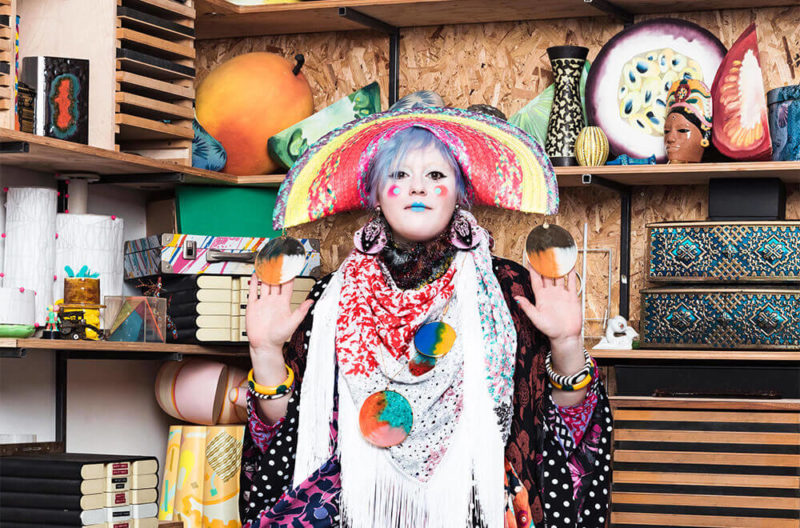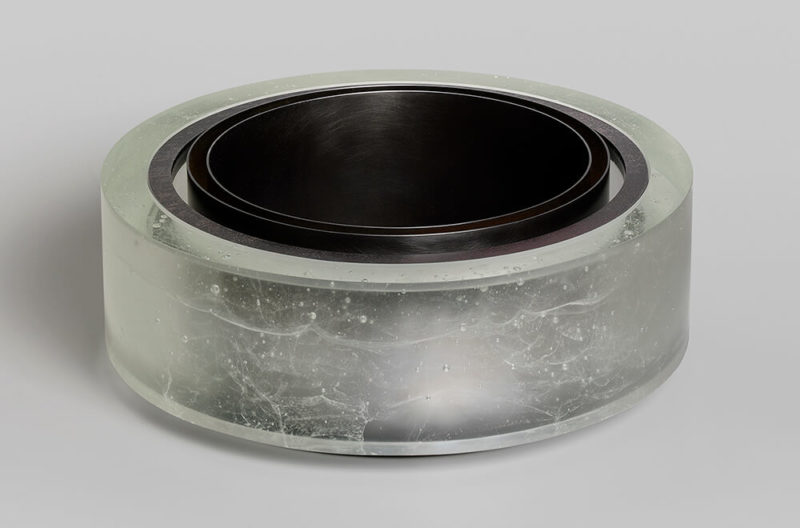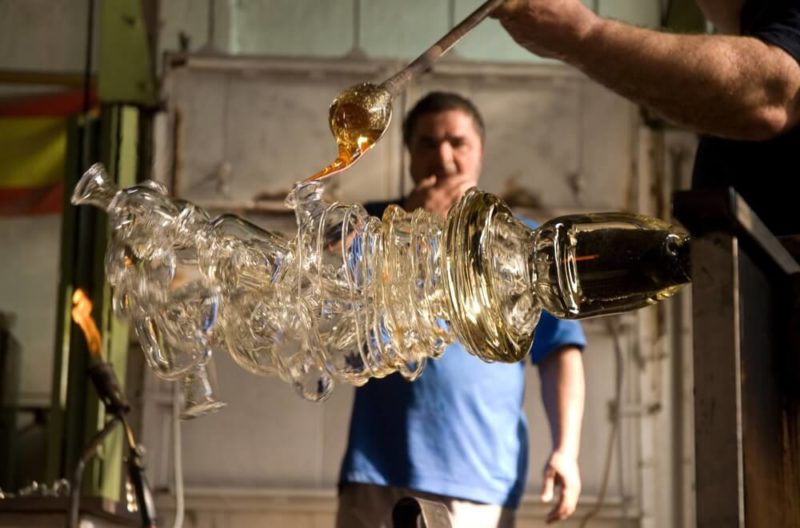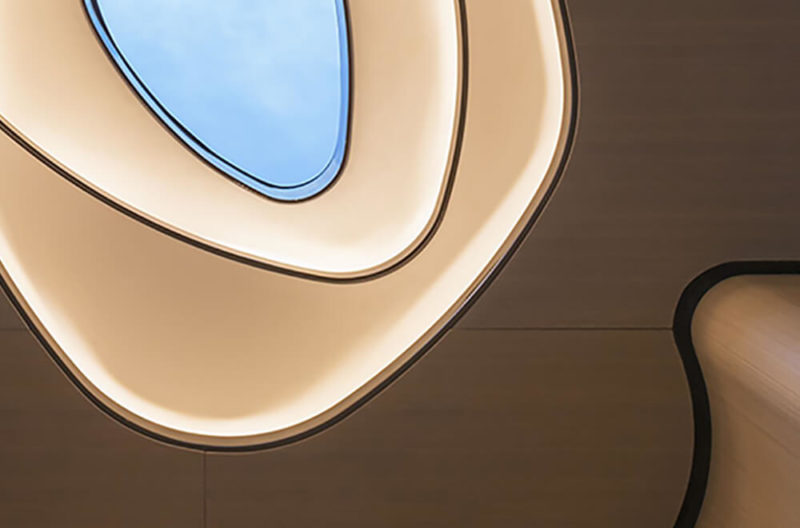Contemporary Studio Glass
Glass is having its moment, argues Grant Gibson.
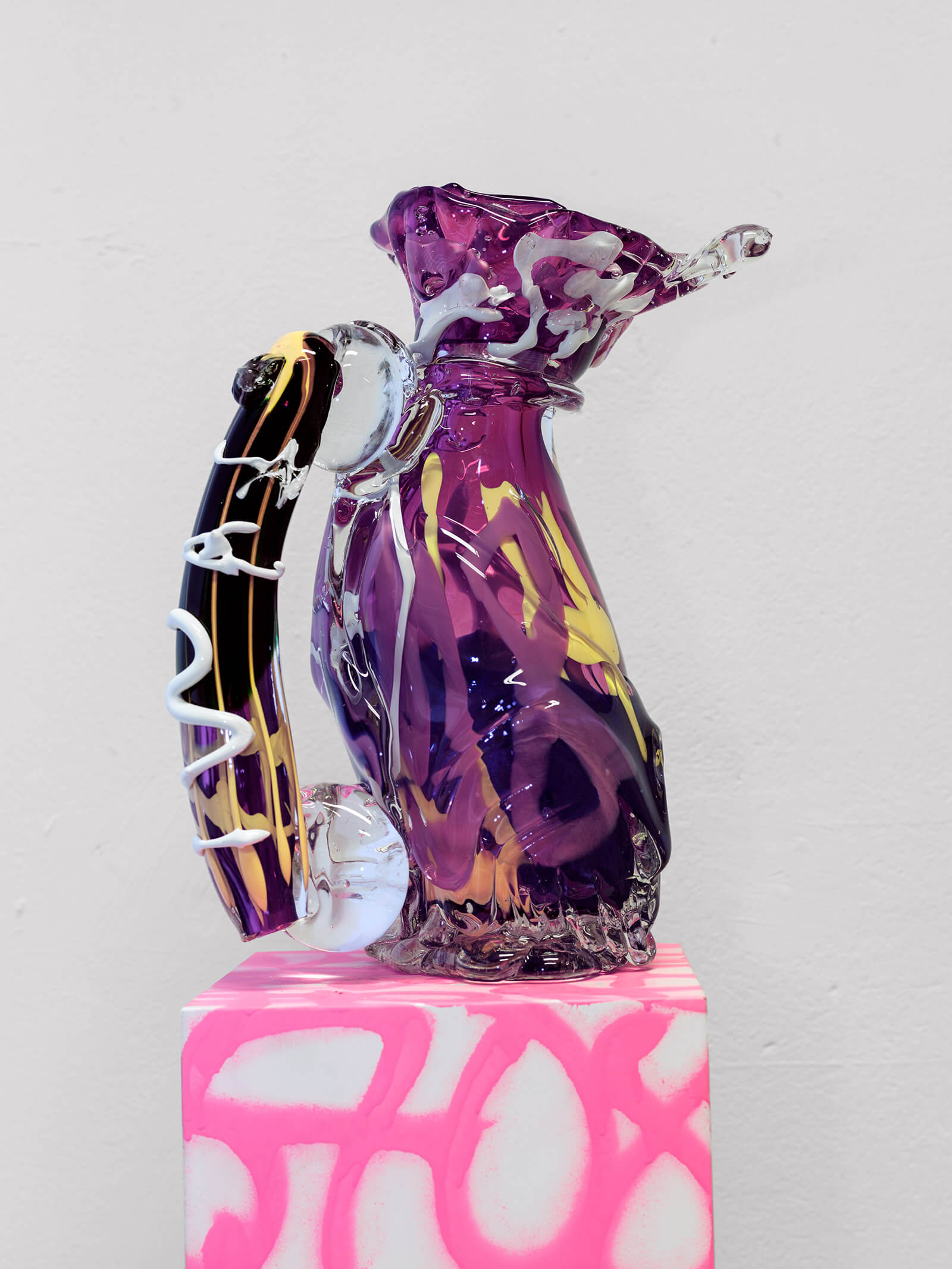
Fredrik Nielsen, ‘I was S’, 2019
COURTESY: Fredrik Nielsen
CRITICS, INFLUENCERS, TASTE-MAKERS, gatekeepers … Whatever you want to call them, as a group they often appear to have a problem with studio glass. It’s a material that possesses the ability to have a strangely negative effect on usually open-minded folk. People whose job it is to search for meaning and nuance feel able to dismiss an entire medium in a four word sentence: “I don’t like glass.” So why is this? I suspect it has something to do with the material’s inherent beauty. Over the years there have been too many artists happy to rely on making objects that simply look colourful or play with light – to make, for example, over-sized pieces of fruit and revel in their technical ability rather than looking to build a conceptual framework. Then there’s the Dale Chihuly effect. The American bestrides the glass stage like a behemoth, producing huge, florid pieces that divide their audience. You either get his stuff or you don’t. However, such is his success and influence that when studio glass is mentioned an image of Chihuly’s work is often conjured up in people’s minds.
It’s worth remembering that, in terms of age, the studio glass movement itself is pubescent – its genesis generally attributed to the US ceramicist turned glass artist, Harvey Littleton, in the early 1960s. While it quickly gathered momentum in the States, it took a little while longer to establish itself in the UK. As Peter Layton, who founded London Glassblowing in 1976 and was one of the pioneers of the medium in this country explains: “The movement was born in the US. It has had a lot of press and critical acclaim. Meanwhile, some very good galleries helped to create the market. It has been a slow burner here. I think its moment is still coming.” Layton describes how in the early days he used to load up his car full of work and drop in on galleries. ‘“Nobody was interested,” he says a little plaintively.
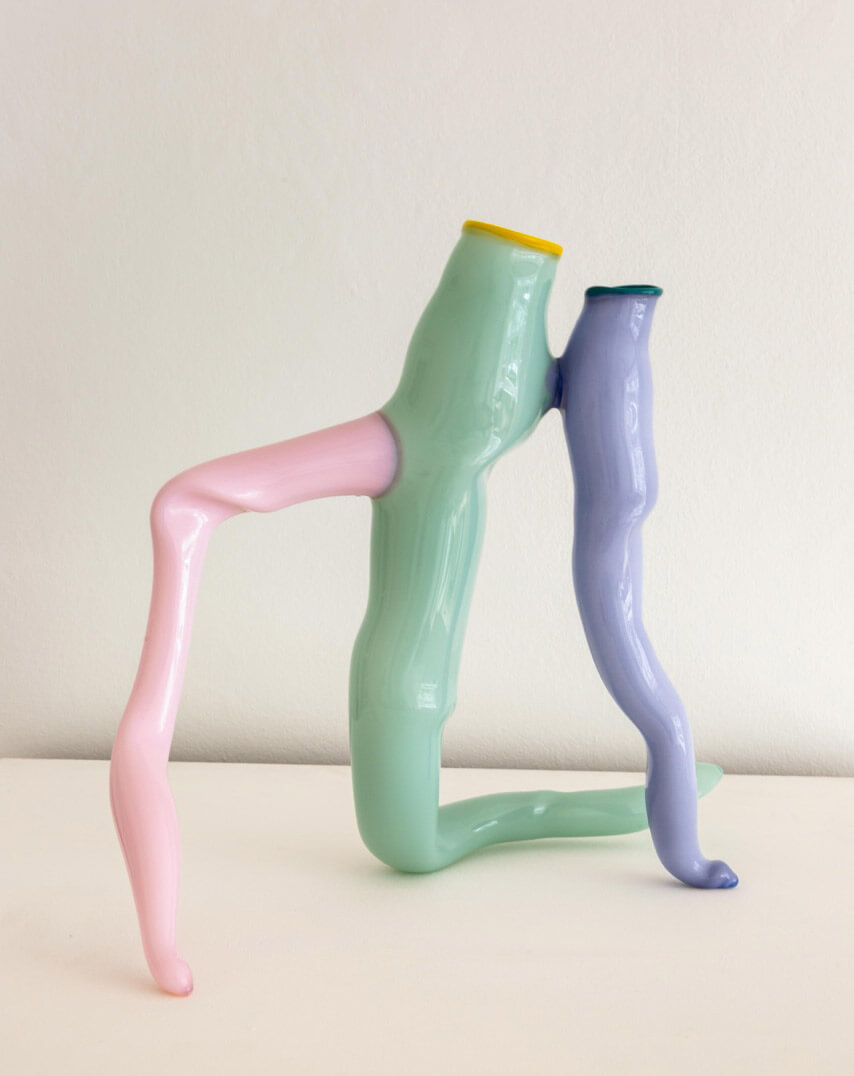
Jochen Holz, ‘Pastel Root Vase’, 2019
COURTESY: Make Hauser & Wirth / PHOTOGRAPH: Emma Lewis
But perhaps things are beginning to change. There is a sense that glass is about to have its moment in the fine art sun. One of the reasons for this is the cyclical nature of fashion. After all, in recent times the fine art world has learned to love skill and materials once again. It has accepted ceramics – in large part thanks to a combination of Grayson Perry and Edmund de Waal – while textile artist Anni Albers has had a major retrospective at Tate Modern in 2019. You sense that glass is due its turn. And this is only right and proper. The material has played a key role in our technological leaps forward. Most obviously it is a vital component of the smartphones that nestle in so many people’s pockets but, as the material scientist and author Mark Miodownik has illustrated, historically it profoundly influenced the manner in which different cultures developed. Neither the Chinese nor the Japanese had any interest in the material until the nineteenth century, for example, preferring to use paper in their windows. And as Miodownik points out: “The lack of glass technology in the East meant that, despite their technical sophistication, they never invented the telescope or the microscope.” As a result the West’s seventeenth century scientific revolution passed them by.
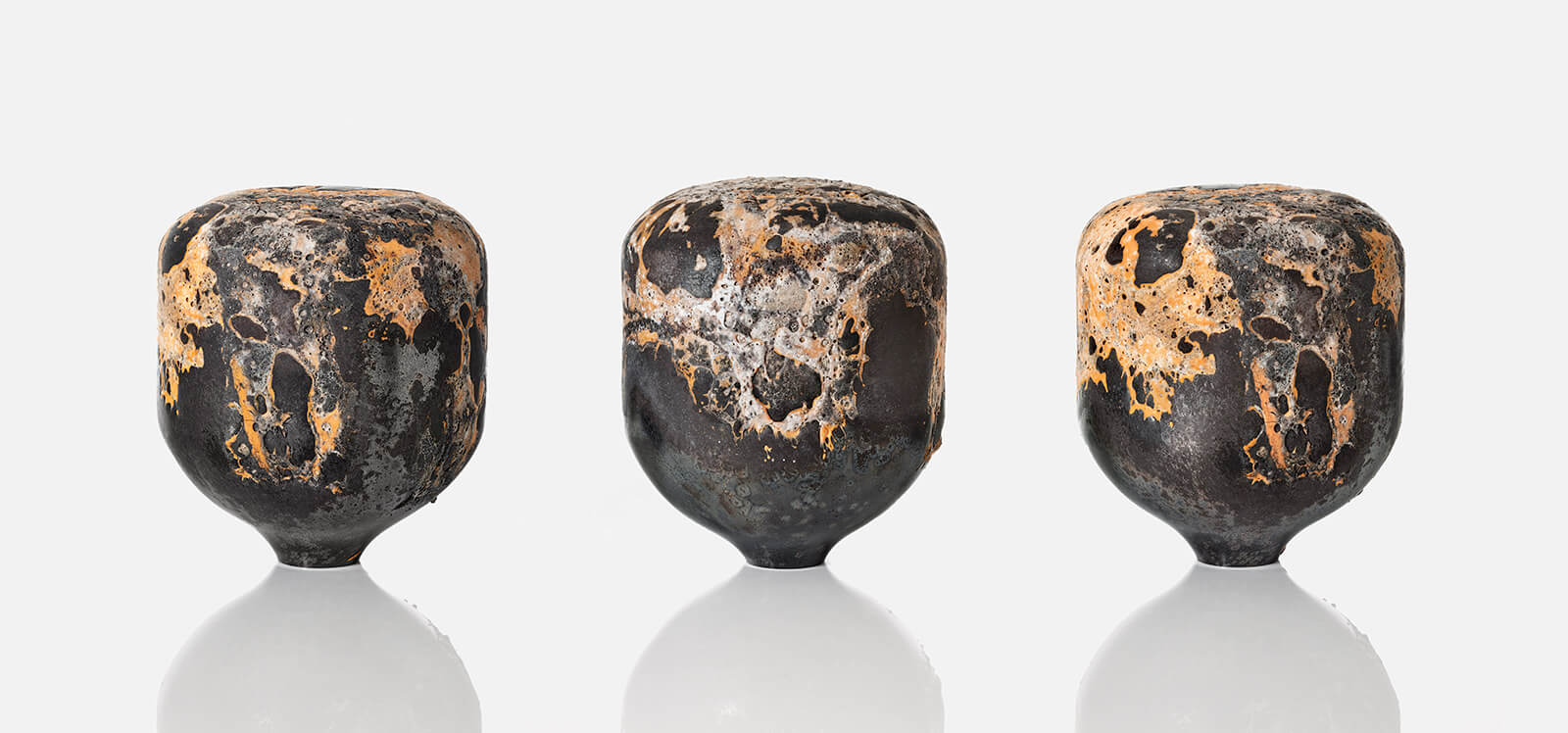
Morten Klitgaard, ‘ORO’, 2019
COURTESY: Morten Klitgaard / PHOTOGRAPH: Dorte Krogh
Importantly too there is an emerging group of artists breaking away from the Chihuly hegemony that is less concerned with making work that’s obviously pretty. In fact some are actively working against its transparency and colour. Morten Klitgaard is one example. The Danish artist is currently living in London, where his partner is doing an MA on the Glass and Ceramics course at the Royal College of Art. He creates dark, almost-weather-beaten, pieces that play with the material’s surface. You fancy his inspiration came from his childhood in Lønstrup, a small town on the northern coast of Denmark but also by a period working on oil rigs, where he had a near-fatal accident, after being left dangling from scaffolding semi-submerged in the sea. As he points out that experience changed his attitude when he started creating pieces again. “It taught me that life can change so fast,” he tells me. “When you work in glass you often end up doing stuff you don’t want to do to make money. But I want to do something that I really enjoy.” The body of his sculptures are blown but subsequently he adds layers of glass fibres, which trap air. These are covered with glass powder and, heated with a torch, the air bubbles expand and create a pocked effect. It’s a form of alchemy and the finished results warp people’s perception of the material. “Most times I have to explain it because people think it’s ceramics,” Klitgaard laughs.
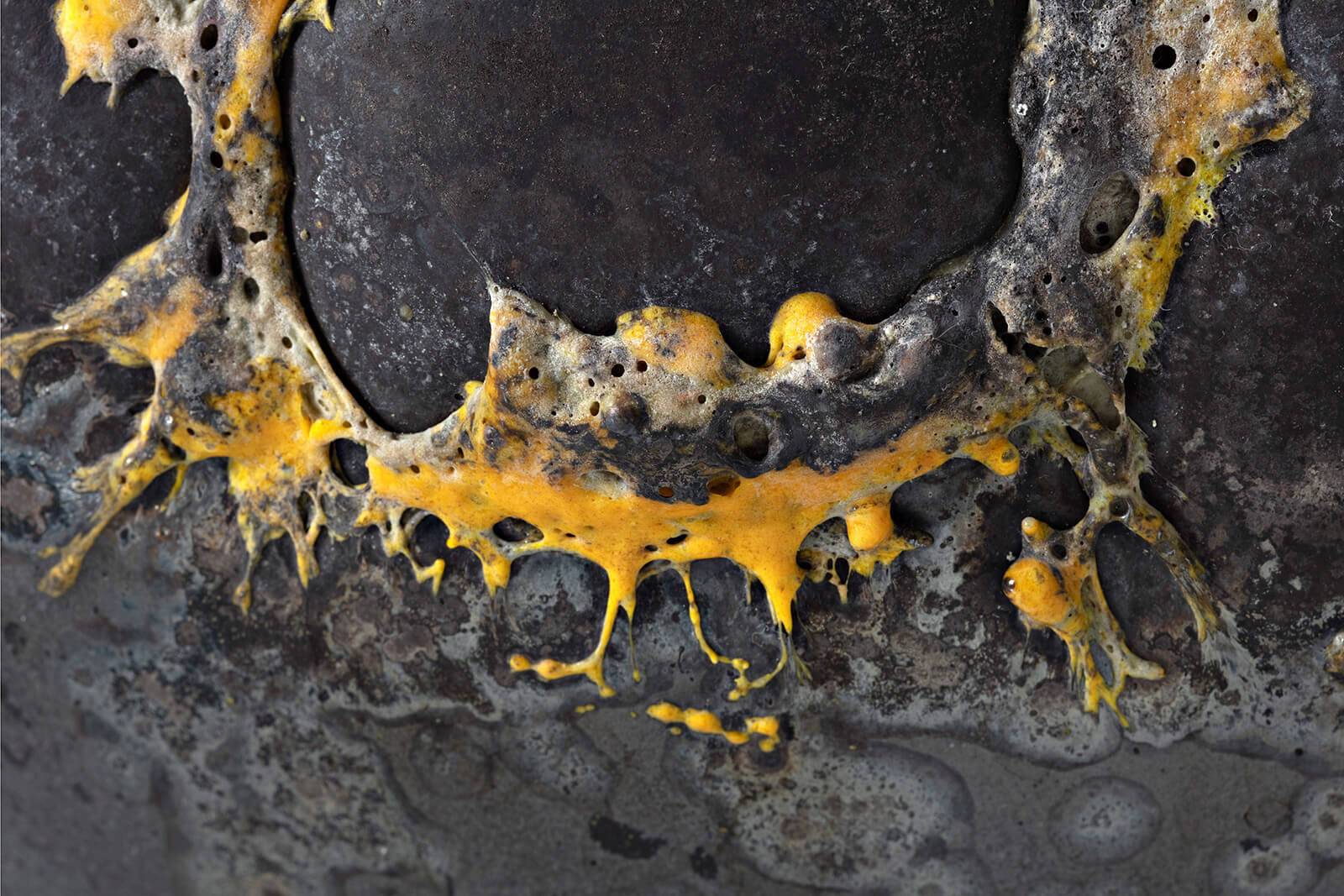
Morten Klitgaard, ‘ORO’, 2019 (detail)
COURTESY: Morten Klitgaard / PHOTOGRAPH: Dorte Krogh
Fredrik Nielsen is another Scandinavian artist who deliberately sets out to eschew the conventional beauty of glass. Inspired by rock music (he has been known to blow glass while wearing a pair of Ray Ban Aviators) and graffiti, he has used car paint to finish pieces that often look rough and ready and teeter on the brink of being lurid. It’s as close as glass art gets to being ‘street’. Which is interesting because his CV suggests a conventional training. He first studied glass at the Orrefors Glass School in Sweden and then went on to the Pilchuck Glass School in Washington and the Royal Institute of Art in Stockholm. He has also been the Artist-in-Residence at the Corning Museum of Glass, in the USA. But as he once said: “I know how to play, but I have chosen not to play the way that I learned.”
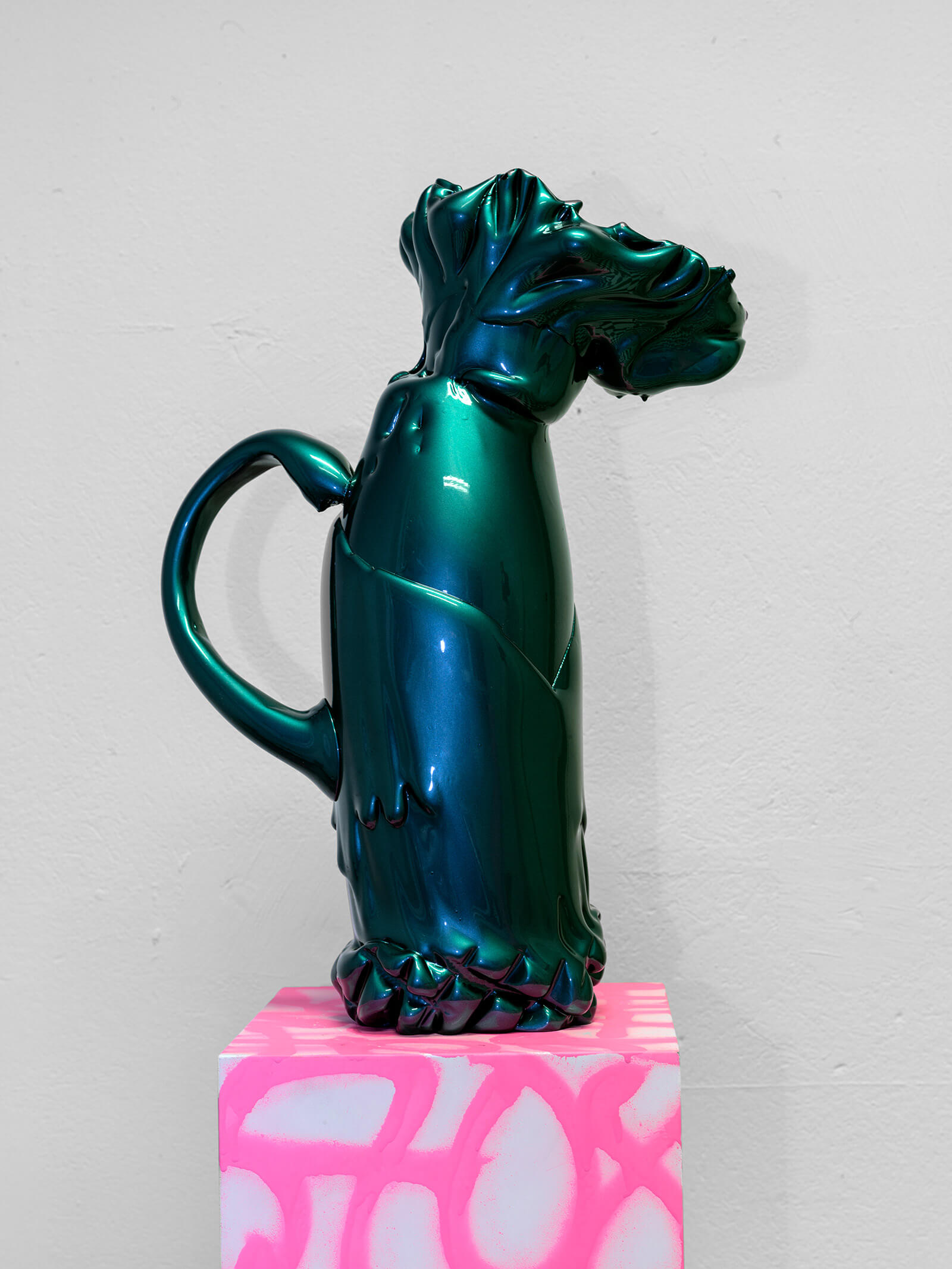
Fredrik Nielsen, ‘Viviant Green Pitcher’, 2019
COURTESY: Fredrik Nielsen
While Klitgaard and Nielsen are obviously rebelling against convention, Laura McKinley’s approach is perhaps a little more delicate. Like them her pieces turn their back on the material’s transparency, often being sandblasted and etched to give them an opaque, matt finish, but they have rather more poise. The recent RCA graduate was fascinated by glass the moment she saw the material being manipulated in college. “I think it was the way the material felt alive. How it moved,” she remembers. “It’s like a living thing. I’d worked with ceramics before but it felt quite dead as a material. Glass though is moving, hot, glowing. I know I’m controlling it, but it can sometimes feel like it’s doing something magical on its own. It can surprise you in that way.”
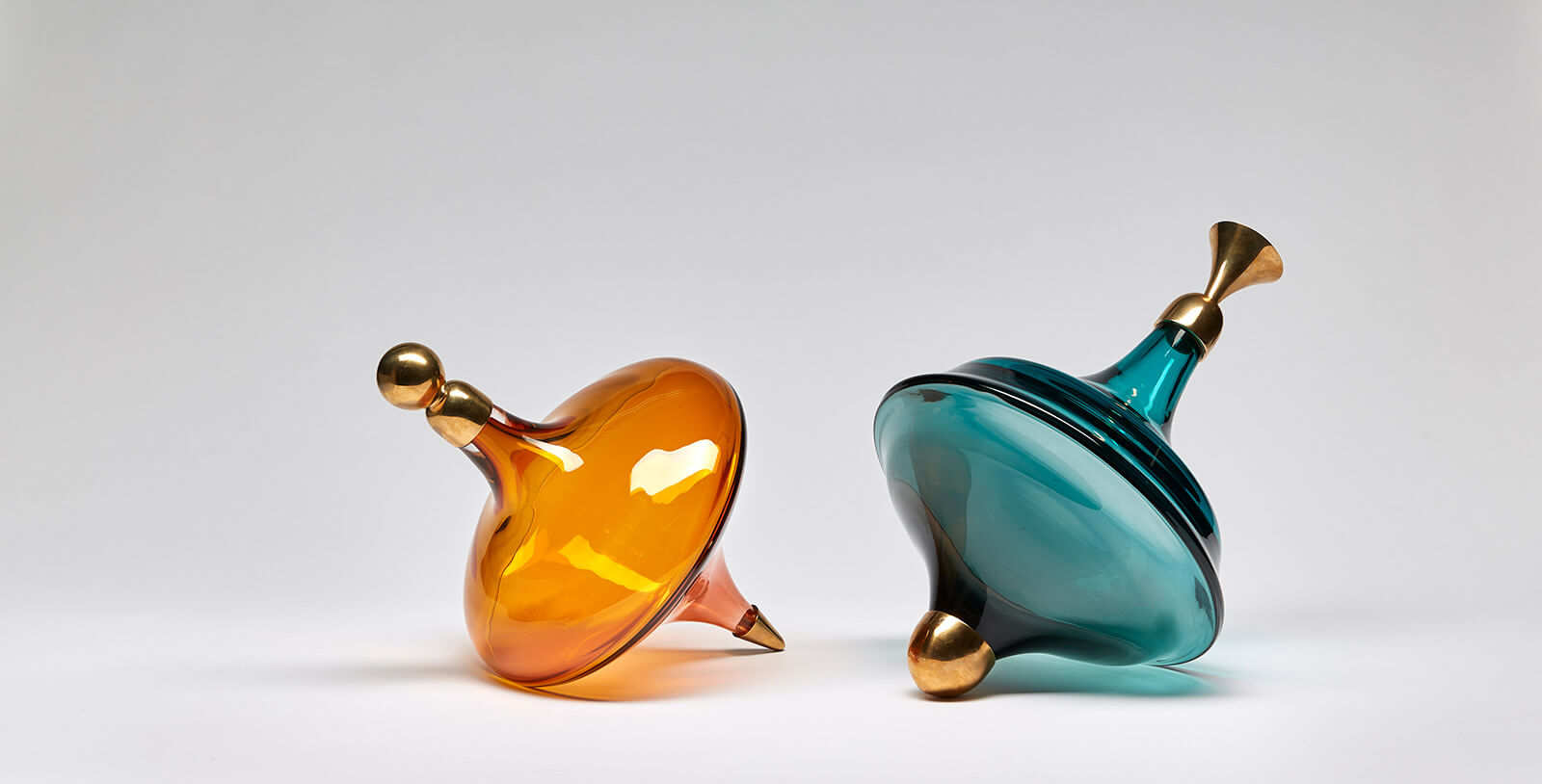
Laura McKinley, ‘Trottola’, 2019
COURTESY: Laura McKinley / PHOTOGRAPH: Alick Cotterill
However, she is also alive to the problems of working with the material. “I always feel like anyone can make something beautiful in glass who hasn’t touched the material before because it’s shiny and it’s colourful. In ceramics it’s harder to make something that isn’t just a lump when you don’t know anything. But even a lump of glass is lovely. That said, I think it’s harder to make an incredible piece in glass as it is so hard to master.”
One aspect of the material she was keen to play with was its surface. Glass can be intimidating – after all it can break easily, or finger prints can be left on it. But McKinley wanted to make work that people could touch. “I was being playful with the finish. So making it look soft – whereas glass tends to look hard and shiny. It was almost as if the pieces were made of a different material. Someone at my degree show asked if the work was made of paper.”
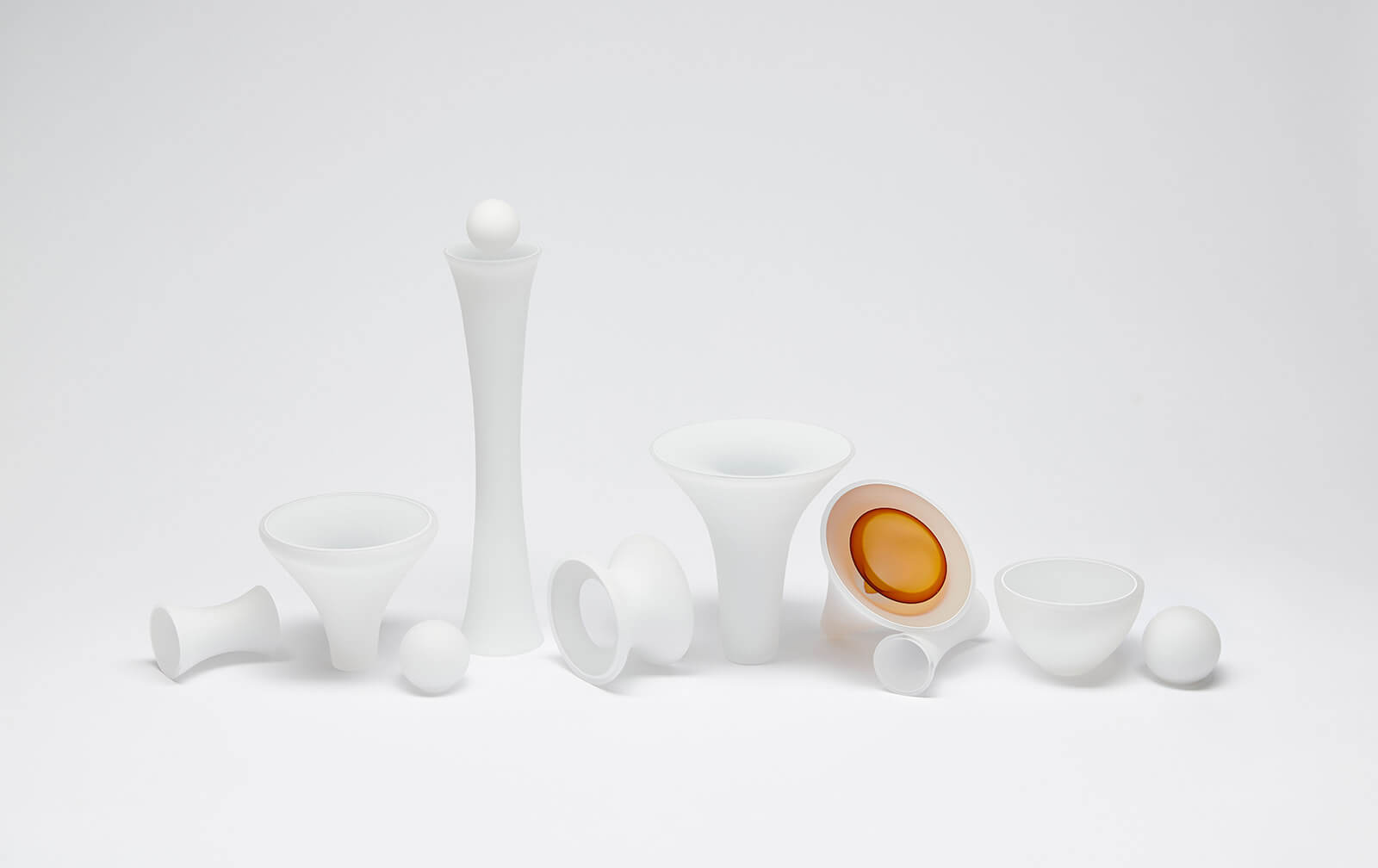
Laura McKinley, ‘Imagine VII’, 2019
COURTESY: Laura McKinley / PHOTOGRAPH: Alick Cotterill
Obviously these three aren’t the only artists investigating and expanding the possibilities of glass. Emma Woffenden, for instance, mixes blown elements with other materials, such as moulded acrylic and plastic piping to fashion strange, macabre, almost alien (and sometimes sexual) figures.
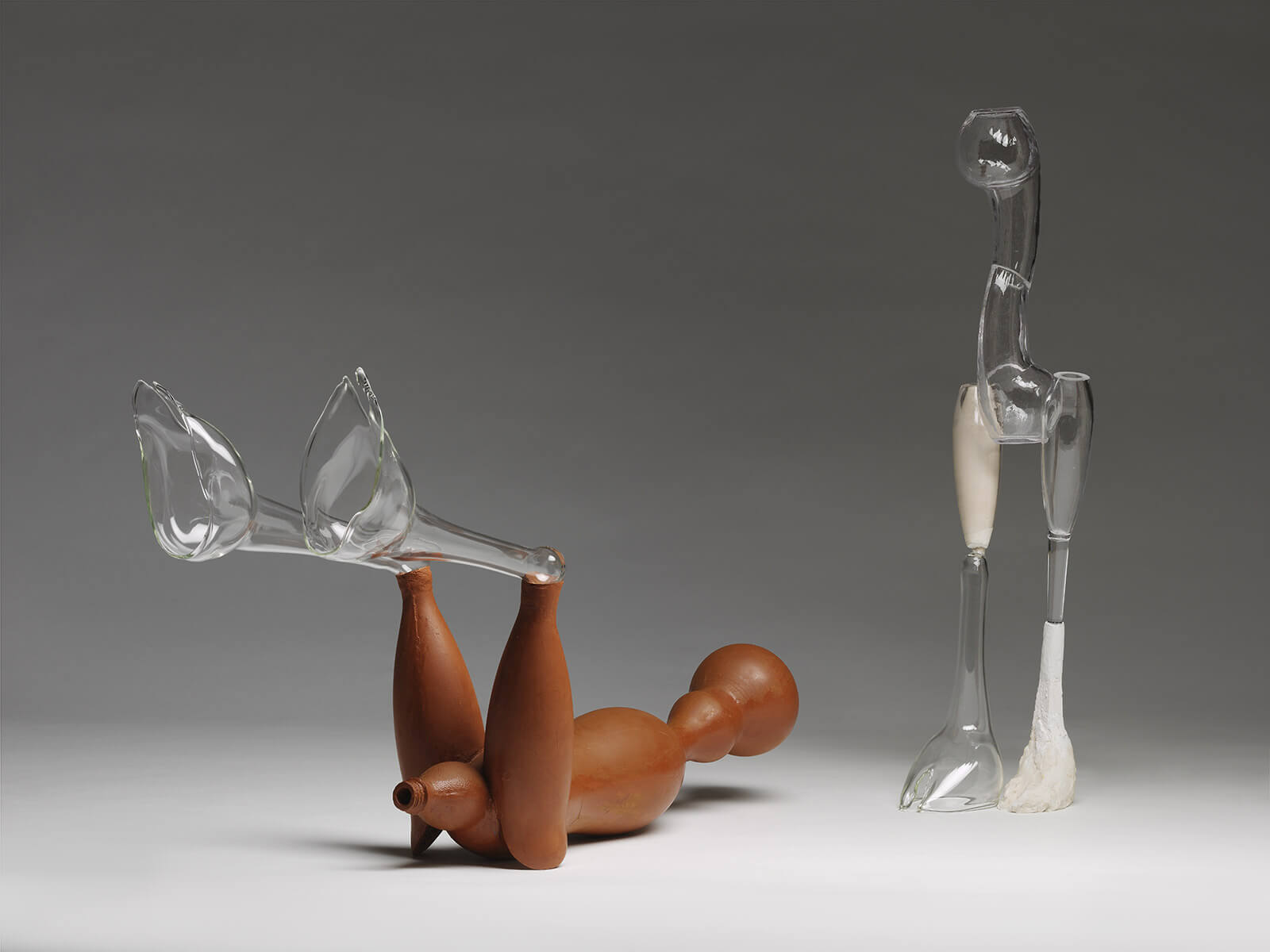
Emma Woffenden, ‘Midwife’, 2016
COURTESY: Victoria and Albert Museum
Louis Thompson has joined forces with designer and activist Sophie Thomas to create work that comments on our environmental situation – in particular the plastic waste that litters our oceans – and Jeff Zimmer won the 2019 British Glass Biennale with a hugely emotive piece, entitled ‘The Fragility of Memory and Material’, which had images of his first lover John, who died in 1995, laser etched onto mobile phone screens. Once lit the screens cast poignant shadows on the wall behind.
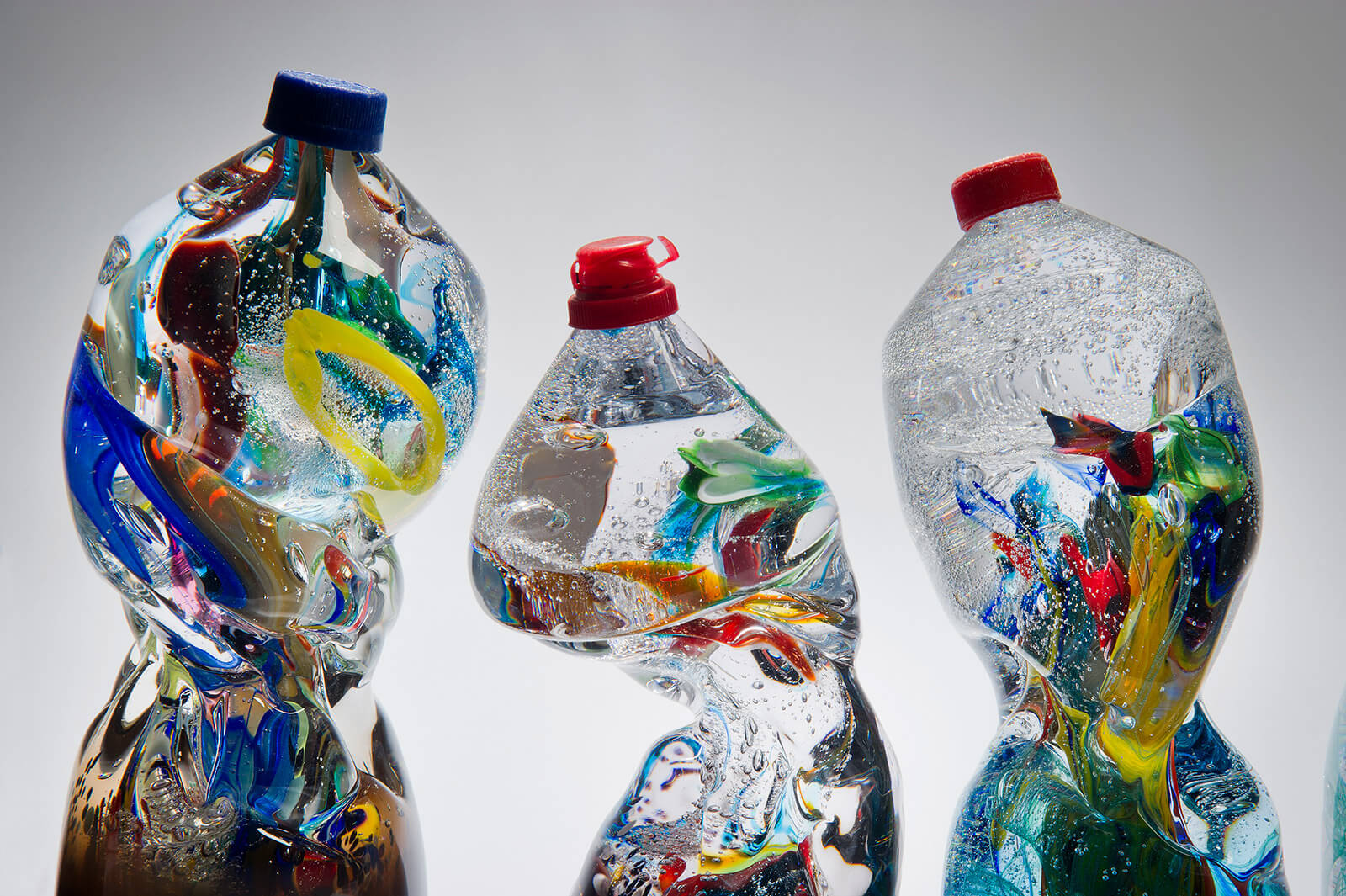
Louis Thompson with Sophie Thomas, ‘Broken Ocean’ series
COURTESY: Louis Thompson
Meanwhile examples of the crossover between fine art and glass are becoming increasingly common. As I type, for instance, the brilliant lamp worker Jochen Holz is showing at Hauser & Wirth in Bruton, while Sunderland’s National Glass Centre has an installation from mother and daughter artist duo Caroline and Maisie Broadhead. Ultimately it’s hard to avoid the feeling that the gatekeepers are wrong and Layton is right. Perhaps glass’s moment is about to come.
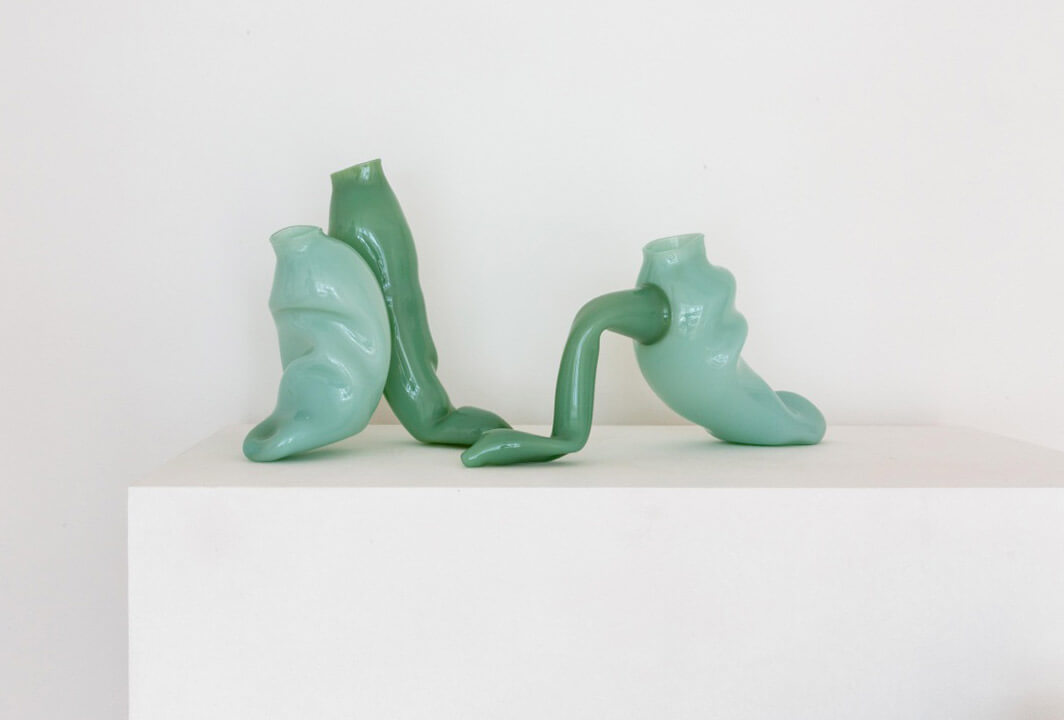
Jochen Holz, ‘Pastel Root Vase’, 2019 and ‘Pastel Reclining Root Vase’, 2019
COURTESY: Make Hauser & Wirth / PHOTOGRAPH: Emma Lewis




